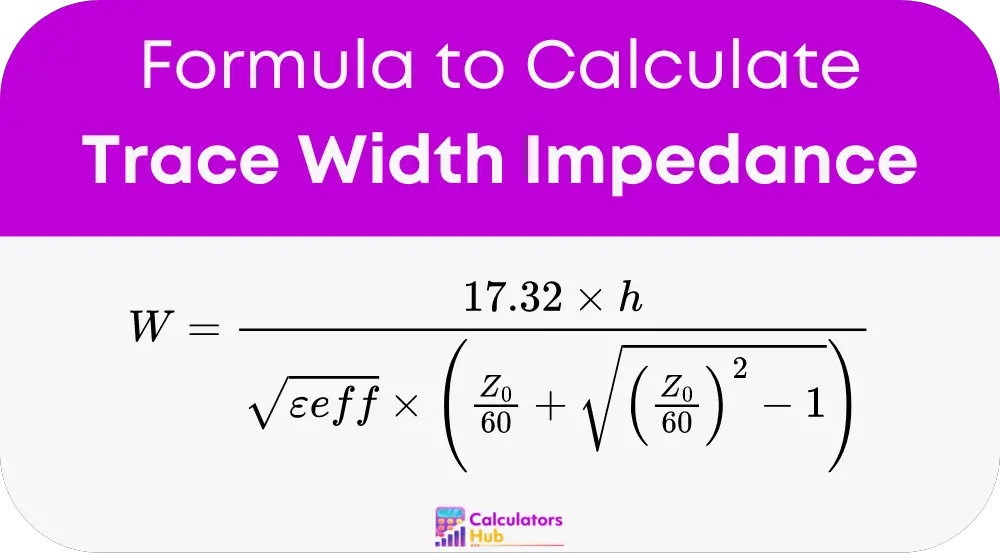A Trace Width Impedance Calculator is a specialized tool used by PCB designers to determine the appropriate width of a trace to achieve a specific impedance. This tool is essential in high-frequency circuit designs where impedance mismatch can lead to significant signal integrity issues.
Formula of Trace Width Impedance Calculator
The formula to calculate the impedance of a trace on a PCB involves several factors, such as the trace width, the thickness of the PCB, and the dielectric constant of the material used. For a desired impedance, the trace width can be calculated using the following formula from the microstrip transmission line model:

Where:
- W is the trace width in inches.
- h is the height of the trace above the ground plane in inches.
- εeff is the effective dielectric constant of the PCB material.
- Z0 is the desired characteristic impedance in ohms.
This formula is critical for ensuring that the trace on the top layer of the PCB meets the necessary impedance requirements.
Table of Typical Values
Here is a table of typical values that can be used as a quick reference for common materials and configurations in PCB design:
| Material Type | Dielectric Constant (εeff) | Typical Impedance (Z0) | Trace Width (W) |
|---|---|---|---|
| FR-4 | 4.5 | 50 ohms | 0.010 inches |
| Polyimide | 3.5 | 70 ohms | 0.012 inches |
This table helps designers quickly determine approximate trace widths without detailed calculations.
Example of Trace Width Impedance Calculator
Consider designing a PCB with an impedance of 50 ohms using FR-4 material. Assuming a trace height (h) of 0.062 inches and an effective dielectric constant (εeff) of 4.5, use the given formula to calculate the trace width (W).
Using the formula:
W = 17.32 * h / (√(εeff) * (Z0/60 + √((Z0/60)^2 – 1)))
Substitute the values:
W = 17.32 * 0.062 / (√(4.5) * (50/60 + √((50/60)^2 – 1)))
Calculate the values:
W = 17.32 * 0.062 / (√(4.5) * (0.833 + √(0.694 – 1)))
W = 17.32 * 0.062 / (√(4.5) * (0.833 + √(-0.306)))
Since the square root of a negative number isn’t defined in real numbers, adjust your impedance or material properties accordingly. This step highlights the need to ensure realistic parameters in your calculations.
Most Common FAQs
The height of the trace above the ground plane and the dielectric constant of the material are critical factors that directly influence the impedance.
The dielectric constant impacts how electric fields behave between the trace and the ground plane, affecting the impedance and, consequently, the required trace width.
While primarily design for microstrip configurations, the principles can be adapt for stripline calculations with appropriate modifications to account for the differences in structure.